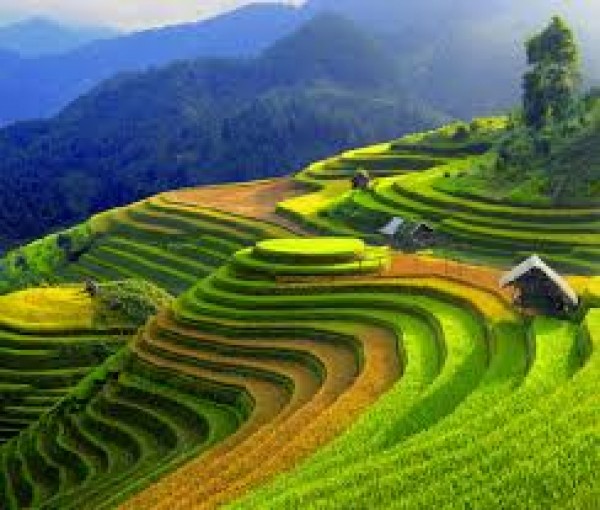Hue, Imperial City
Still remaining its form of City under Middle Age and the constructions of monarchic, a invaluable museum of Vietnam, this is Imperial City - the last remaining section of 19th-century Hue, and it is now a modern experiment in recreating traditional Vietnam. The Imperial City was recognized as a World Cultural Heritage Site by UNESCO on December 1993. Let’s take a trip through the most important historical and cultural monument of Vietnam.
Dominating the skyline is the 37m (120ft) high Cot Co or Flag Tower, first erected in 1809. Cot Co achieved international renown on the morning of 31 January 1968, when communist forces seized the Citadel and ran their yellow-starred banner up its tall mast. The lower part of the gate is stone, while on top is the "Belvedere of the Five Phoenixes" where the emperor appeared on important occasions, and where the last emperor abdicated to Ho Chi Minh's Revolutionary Government in 1945.
Just inside the gate is a lotus pond with a bridge once reserved for the emperor's private use. Across the bridge is the Thai Hoa Palace used for official receptions and other important court ceremonies. The columns supporting the roof are lacquered and inlaid with gold.
Thai Hoa Palace
Behind the Thai Hoa Palace are a pair of smaller halls used by mandarins to prepare for court ceremonies. The halls form a courtyard, the fourth side of which was once a wall dividing the more public area of the citadel from the emperor's private residence, the "Forbidden Purple City." The name conjures up images of grand palaces like Beijing. Unfortunately, it takes quite a bit of imagination to picture the buildings that once occupied what is now a grassy expanse. What wasn't destroyed by a fire in 1947 was bombed in the 1968 Tet Offensive. The picture at above left was taken from the upper-most level looking back at the Thai Hoa palace and the Flag tower.
Off to one side of the central axis of the forbidden city, about midway, is the Thai Binh Lau or Royal Library. This small building stands in a garden and is fronted by small pond mostly taken up by a mountain-island well-grown with moss and bonsai. You will find similar ponds, fountains or even large bowls of water in many structures all over Vietnam.
Although you must enter the citadel through the main gate, you can exit it at several other points. Between the Thai Hoa palace and the halls of the mandarins, a path leads to the Hien Nhon gate (left). Leaving by this gate is the shortest route to get from the forbidden city to the museum at Long An palace. Along the path are a couple of buildings worth a look.
A visit to Hue might be considered incomplete without a boat trip on the outstandingly lovely Perfume River. Boats are readily available for hire, either for an exploratory trip in the vicinity of Hue, or for a longer journey upstream to the tombs of Minh Mang and Gia Long.
Perfume River
It's hard to explain the uncanny beauty of the river, though doubtless the iridescent, aquamarine waters, together with the profusion of colourful craft and boat women sporting non la--the ubiquitous cream-coloured conical hat of Vietnam--all contribute to the effect. On a clear, sunny day the Perfume River can indeed be magical.
It is recommended that visitors coming to Hue joining a day tour around the city to make sure they fully enjoy visiting all the attractions this lovely city has to offer while understanding more about a colorful period in Vietnamese history. Aside from the classic Hue city tours that cover the tombstones and mausoleum, the Huong river and other popular attractions in the city, tourists can also choose some other less typical tours such as food tours, day tours to handicraft villages or Tam Giang Lagoon. There are day tours to DMZ area in Quang Tri starting from Hue city as well. Those who want to check out the detailed itineraries for these day tours can take a look at these tours provided by Luco Travel Tour





